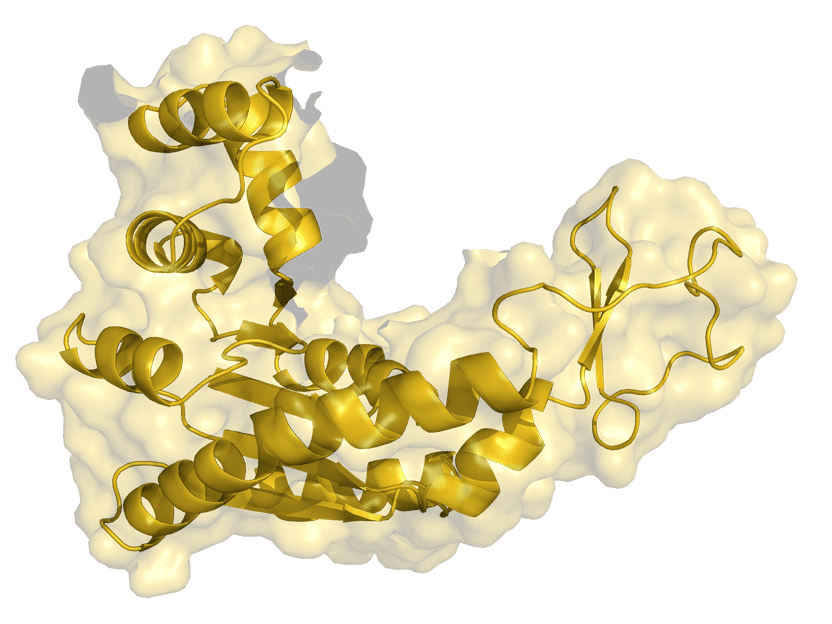Artificial intelligence: Swarm learning decodes biomolecules
They are often referred to as the "building blocks of life": biomolecules. To understand and use their function in the body, one must know their structure. A complex and sometimes imprecise matter. This is where the new method developed at the University of Duisburg-Essen (UDE) together with other German research centres comes in - with the help of artificial intelligence. The researchers have now published their results in Nature Machine Intelligence.

Artificial intelligence: Swarm learning decodes biomolecules
Schug
Ingested with food, biomolecules enter the body and are broken down into chemical compounds - biomolecules such as fats, proteins or carbohydrates. The question of how they are structured becomes particularly interesting when it comes to the molecular cause of diseases, for example. The problem is that complex experiments are needed to resolve the structure of the nano-sized biomolecules. But even then, the evaluations are not always unambiguous - the measured data require extensive interpretation. UDE Professor Alexander Schug, head of the Computational Structural Biology group, illustrates this with an example: "A shadow cast can be caused by different shapes. Here we have the measurement data of how the biomolecule reacts to the examination, but we don't know directly what the biomolecule looks like."
This is where artificial intelligence comes into play, which the UDE team has developed in collaboration with the Forschungszentrum Jülich, the Karlsruhe Institute of Technology and the German Cancer Research Center. The measurement data is complemented by a physics-based model of the biomolecule in the computer. "To stay in the analogy of casting shadows, we ask ourselves: which biomolecule shape could produce such a shadow and is at the same time physically stable?" The method is based on swarm learning: a computer simulates many members of a large swarm simultaneously, with each member testing a different weighting of measured values and physical model. In the process, all swarm members are in contact with each other and in a permanent exchange of parameter combinations. "They learn which combinations work well and get better and better at narrowing down which other promising combinations exist. This then leads to the structure they are looking for." As a result, the new method makes very efficient use of computing time while delivering highly accurate structures.
In the future, this method could help treat diseases that act at the molecular level, such as Alzheimer's or Huntington's disease. Its use in material simulations is also conceivable.
Note: This article has been translated using a computer system without human intervention. LUMITOS offers these automatic translations to present a wider range of current news. Since this article has been translated with automatic translation, it is possible that it contains errors in vocabulary, syntax or grammar. The original article in German can be found here.
Original publication
Original publication
Weiel, M., Götz, M., Klein, A., Coquelin, D., Floca, R., Schug, A. (2021) FLAPS: Dynamic particle swarm optimization of biomolecular simulation parameters with flexible objective functions. Nature Machine Inteligence, 10.1038/s42256-021-00366-3. www.nature.com/articles/s42256-021-00366-3
Organizations
Other news from the department science

Get the life science industry in your inbox
By submitting this form you agree that LUMITOS AG will send you the newsletter(s) selected above by email. Your data will not be passed on to third parties. Your data will be stored and processed in accordance with our data protection regulations. LUMITOS may contact you by email for the purpose of advertising or market and opinion surveys. You can revoke your consent at any time without giving reasons to LUMITOS AG, Ernst-Augustin-Str. 2, 12489 Berlin, Germany or by e-mail at revoke@lumitos.com with effect for the future. In addition, each email contains a link to unsubscribe from the corresponding newsletter.






















































